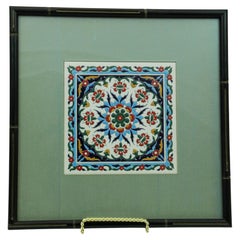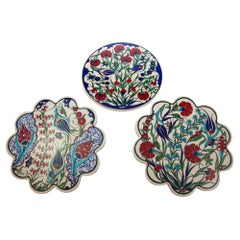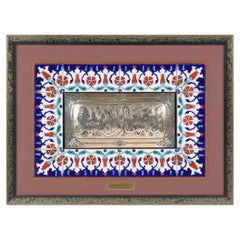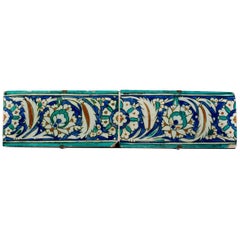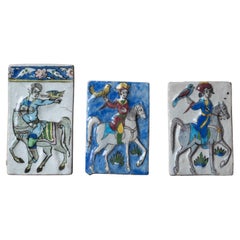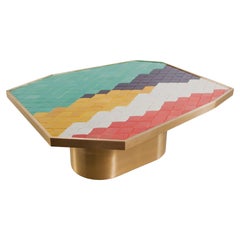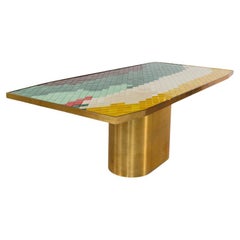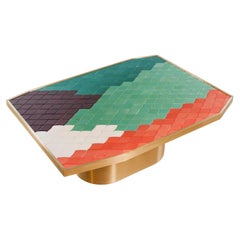Iznik Tiles
Mid-20th Century Turkish Islamic Decorative Art
Ceramic, Pottery, Wood
Late 20th Century Turkish Ceramics
Ceramic
21st Century and Contemporary Islamic Wall-mounted Sculptures
Metal
Antique 15th Century and Earlier Turkish Decorative Art
Ceramic
Late 20th Century Turkish Islamic Decorative Art
Ceramic
Mid-20th Century Persian Ceramics
Ceramic
2010s European Dining Room Tables
Brass
2010s European Dining Room Tables
Brass
2010s European Dining Room Tables
Brass
Antique Early 1900s Islamic Wall-mounted Sculptures
Ceramic
Early 20th Century Wall-mounted Sculptures
Ceramic
Early 20th Century Wall-mounted Sculptures
Ceramic
Early 20th Century Wall-mounted Sculptures
Ceramic
Early 20th Century Wall-mounted Sculptures
Ceramic
Early 20th Century Wall-mounted Sculptures
Ceramic
Early 20th Century Wall-mounted Sculptures
Ceramic
Early 20th Century Wall-mounted Sculptures
Ceramic
Early 20th Century Wall-mounted Sculptures
Ceramic
Early 20th Century Wall-mounted Sculptures
Ceramic
Mid-20th Century Turkish Spanish Colonial Turkish Rugs
Wool
Early 20th Century Wall-mounted Sculptures
Ceramic
Mid-20th Century Wall-mounted Sculptures
Ceramic
Early 20th Century Wall-mounted Sculptures
Ceramic
Early 20th Century Wall-mounted Sculptures
Ceramic
Early 20th Century Wall-mounted Sculptures
Ceramic
Early 20th Century Wall-mounted Sculptures
Ceramic
Early 20th Century Wall-mounted Sculptures
Ceramic
Early 20th Century Wall-mounted Sculptures
Ceramic
Early 20th Century Wall-mounted Sculptures
Ceramic
Early 20th Century Wall-mounted Sculptures
Ceramic
Early 20th Century Wall-mounted Sculptures
Ceramic
Early 20th Century Wall-mounted Sculptures
Ceramic
Early 20th Century Unknown Wall-mounted Sculptures
Ceramic
Vintage 1950s Italian Mid-Century Modern Decorative Art
Paper
Vintage 1920s Israeli Decorative Art
Pottery
21st Century and Contemporary Italian Islamic Dinner Plates
Ceramic
21st Century and Contemporary Italian Dinner Plates
Ceramic
21st Century and Contemporary Turkish Console Tables
21st Century and Contemporary Turkish Dining Room Tables
21st Century and Contemporary Shelves
Antique 17th Century Turkish Ceramics
Ceramic
Antique 17th Century Turkish Architectural Elements
Pottery
Early 20th Century Turkish Wall Mirrors
Ceramic, Glass
Antique 15th Century and Earlier Turkish Decorative Art
Ceramic
Late 20th Century Turkish Decorative Art
Ceramic
Early 20th Century Turkish Ceramics
Ceramic
Antique 16th Century Israeli Religious Items
Ceramic
Antique 19th Century Wall-mounted Sculptures
Ceramic
Early 20th Century Wall-mounted Sculptures
Ceramic
Early 20th Century Wall-mounted Sculptures
Ceramic
Early 20th Century Wall-mounted Sculptures
Ceramic
Early 20th Century Wall-mounted Sculptures
Ceramic
Early 20th Century Wall-mounted Sculptures
Ceramic
Antique Mid-19th Century Unknown Other Wall-mounted Sculptures
Ceramic
Early 20th Century Wall-mounted Sculptures
Ceramic
Early 20th Century Wall-mounted Sculptures
Ceramic
Early 20th Century Wall-mounted Sculptures
Ceramic
- 1
Iznik Tiles For Sale on 1stDibs
How Much are Iznik Tiles?
- 1stDibs ExpertApril 5, 2022Iznik tiles originated from the town of İznik located in Bursa, Turkey. During the Ottoman empire, skilled craftsmen in the town became well known for their hand-painted ceramic tiles. Shop a range of Iznik tiles from some of the world’s top sellers on 1stDibs.
- Why are Iznik tiles blue?1 Answer1stDibs ExpertApril 5, 2022Iznik tiles are blue because the Turkish artisans who created them drew inspiration from the blue and white porcelain produced by the Chinese. However, not all Iznik tiles are blue. Some are also red, green or turquoise. You'll find a range of Iznik tiles on 1stDibs.
Read More
Punk Rock and Rebellion Animate London’s Hit Yoshitomo Nara Show
The exhibition includes his portraits of wide-eyed kids with mayhem on their minds, as well as some of the artist’s personal belongings.
Whether Painted or Papered, Muraled Walls Make Bold Statements in the Home
The ancient practice of covering walls in artistic scenery is back.
In Francks Deceus’s ‘Mumbo Jumbo #5,’ the Black Experience Is . . . Complicated
Despite the obstacles, the piece’s protagonist navigates the chaos without losing his humanity.
12 Floral-Accented Rooms with a Handmade, Folkloric Feel
Who needs a flower garden? Just use your imagination — and some beautifully patterned wallpaper or fabric — to bring the outdoors in.
This Wolf Kahn Pastel Is the Epitome of Beauty at Its Most Essential
A longtime admirer of Kahn’s work, 1stDibs editorial director Anthony Barzilay Freund explores why it’s relevant now more than ever.
Why Jules Chéret Was the King of the Modern Poster
The streets of fin-de-siècle Paris were set aglow with colorful poster ads, thanks to the printing techniques invented by Jules Chéret. Now, the Milwaukee Art Museum is celebrating this undersung talent in America's first solo show dedicated his exuberant works.
Anna Condo’s Multifaceted Career Spans Film, Photography and NFTs
From her historic Manhattan townhouse, the talented creator and curator of 1stDibs' latest NFT exhibition tells us about the art in her home and how she got involved with cryptoart.
How Keith Rivers Went from NFL Linebacker to Blue-Chip Art Aficionado
The former football player is as serious about becoming a great contemporary-art patron as he once was about making tackles. Here, Rivers tells us how he got the collecting bug and how his tastes have evolved over the years.
